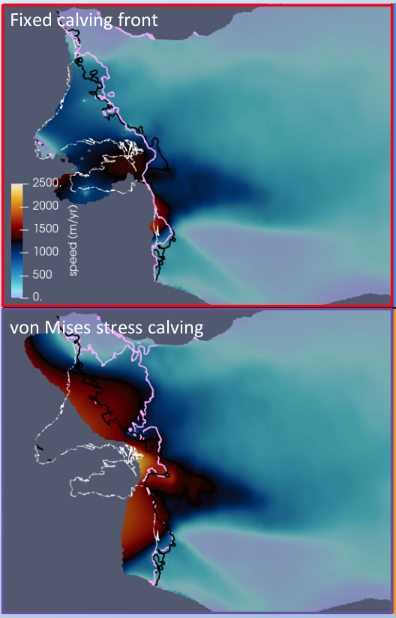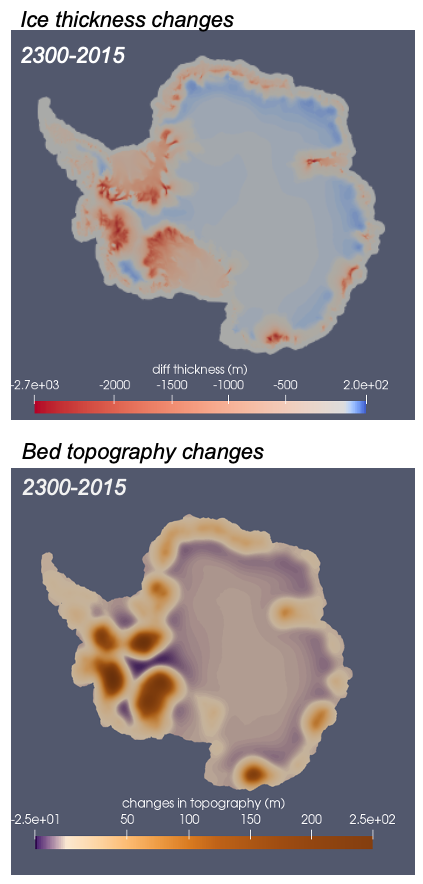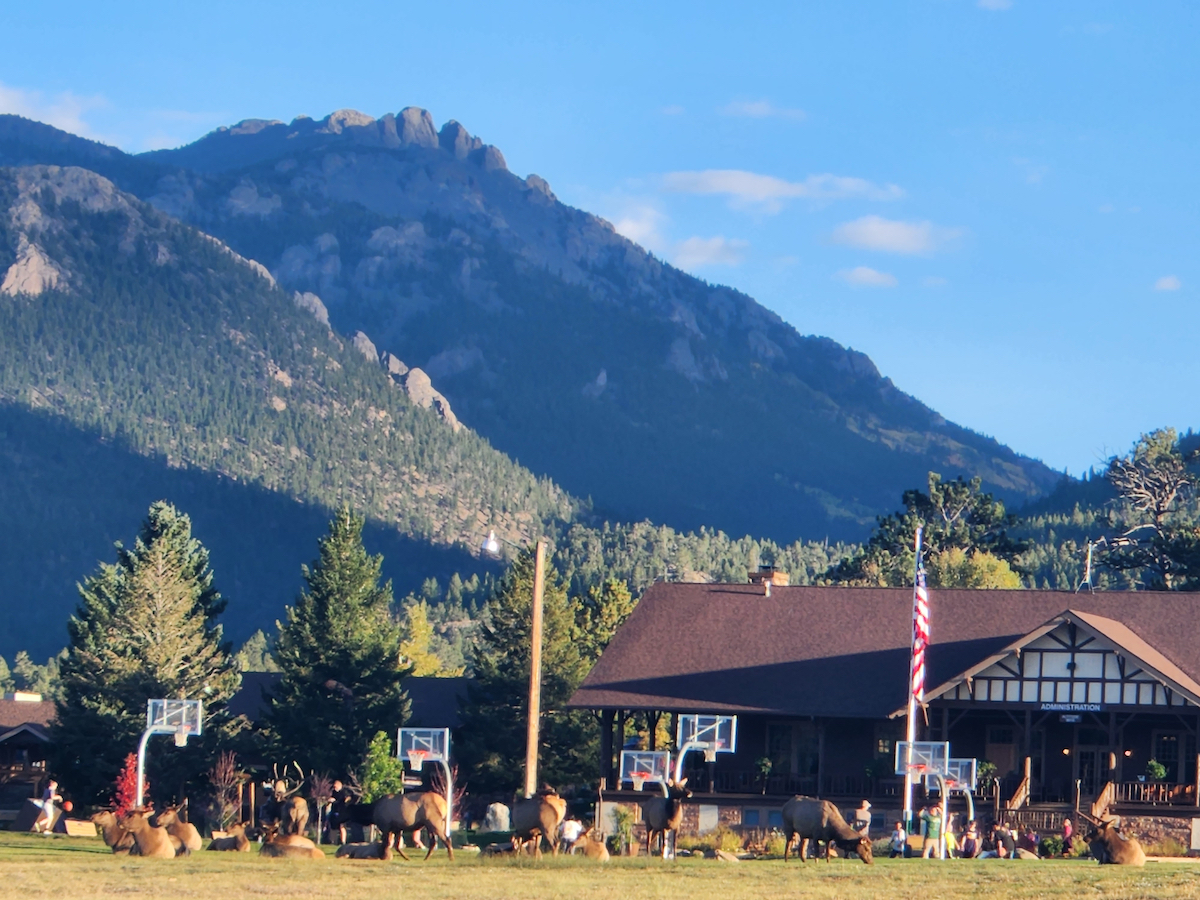West Antarctic Ice Sheet Workshop

Figure 1. Highlight from Trevor Hillebrand’s talk: Including evolving calving in projections of Thwaites Glacier through 2100 leads to ice speedup and greater retreat of grounded ice (pink line).
The West Antarctic Ice Sheet (WAIS) Initiative held its 29th annual WAIS Workshop at the YMCA of the Rockies in Estes Park, CO, USA, from September 26-29, 2022.
The NSF- and NASA-sponsored WAIS Workshop hosts transdisciplinary and societally critical science focused on marine ice-sheet and adjacent earth systems, with particular emphasis on the West Antarctic Ice Sheet. The 2022 workshop hosted about 100 attendees in-person[*] and was also live-streamed, allowing real-time engagement from the global community through an online interface. The beautiful YMCA of the Rockies venue — adjacent to Rocky Mountain National Park — offered a serene setting for interactions between participants in scientific sessions, at meals, around the fire pit, and on hikes and walks.
Agenda
The WAIS 2022 agenda was organized around six main themes:
- Observational and modeling gaps
- Improving predictability
- Atmospheric and oceanic drivers
- Marine ice sheet sensitivity in the climate system
- Antarctic Open Science
- WAIS and the Community

Figure 2. Highlight from Holly Han’s talk: Projections of the Antarctic Ice Sheet through 2300 using the ice-sheet model, MALI, coupled to a sea-level model. A large amount of ice thinning in marine-based sectors of the ice sheet leads to relative bedrock uplift of hundreds of meters, which slows ice-sheet retreat.
E3SM related content
The E3SM related projects (so called E3SM “ecosystem” projects) and E3SM model were well represented, including presentations on improved Antarctic Ice Sheet projections from E3SM’s ice-sheet component, MALI, accounting for better representation of the physical processes of iceberg calving and glacier isostatic adjustment (see Fig. 1, 2). Additionally, work on modeling and observations of ice-shelf basal melting from the E3SM ecosystem team highlighted E3SM’s ocean expertise. These contributions helped round out the aim of the WAIS Workshop to address Antarctic science through the coalescence of theory, field observations, remote sensing, multi-scale modeling across paleo, modern, and future timescales. The science discussions were supplemented by perspectives from NASA and NSF program managers, discussion around the health of the research community, and actionable community discussions. As always, the WAIS Workshop proved to be a fantastic opportunity to interact with the larger Antarctic research community.
Selected Presentations
Check out the presentations and posters related to E3SM and the E3SM ecosystem:
- Accounting for ice-shelf damage in rheology and calving laws reproduces observed changes and amplifies projected 21st century mass loss, Trevor Hillebrand, Los Alamos National Laboratory
- Coupled ice sheet-sea level modeling for improving projections of Antarctic Ice Sheet’s contribution to sea-level change: simulation results following the new ISMIP6-2300 experimental protocol, Holly Han, Los Alamos National Laboratory
- Statistical Generation of Antarctic Ice Shelf Basal Melt Realizations with Realistic Spatiotemporal Variability, Shivaprakash Muruganandham, Georgia Tech
- Rapid bedrock uplift may slow retreat of Thwaites Glacier by decades over the coming centuries, Matthew Hoffman, Los Alamos National Laboratory
- Inferring ocean variability in ice-shelf cavities from basal melt rate time series, Irena Vaňková, Los Alamos National Laboratory
- Utilization of High-Resolution Ice Mass Balance Datasets for Predicting and Observing Global Patterns of Sea Level Change and Crustal Deformation, Sophie Coulson, Los Alamos National Laboratory
[*] The in-person format employed a mask policy and provided daily COVID rapid tests for all participants.
This article is a part of the E3SM “Floating Points” Newsletter, to read the full Newsletter check:



